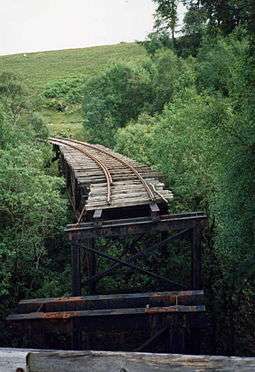Lochaber Narrow Gauge Railway
| Lochaber Narrow Gauge Railway | |||||||||||||||||||||||||||||||||||||||||||||||||||||||||||||||||||||||||||||||||||||||||||||||||||||||||||||||||||||||||||||||||||||||||||||||||||||||||||||||||||||||||||||||||||||||||||||||
|---|---|---|---|---|---|---|---|---|---|---|---|---|---|---|---|---|---|---|---|---|---|---|---|---|---|---|---|---|---|---|---|---|---|---|---|---|---|---|---|---|---|---|---|---|---|---|---|---|---|---|---|---|---|---|---|---|---|---|---|---|---|---|---|---|---|---|---|---|---|---|---|---|---|---|---|---|---|---|---|---|---|---|---|---|---|---|---|---|---|---|---|---|---|---|---|---|---|---|---|---|---|---|---|---|---|---|---|---|---|---|---|---|---|---|---|---|---|---|---|---|---|---|---|---|---|---|---|---|---|---|---|---|---|---|---|---|---|---|---|---|---|---|---|---|---|---|---|---|---|---|---|---|---|---|---|---|---|---|---|---|---|---|---|---|---|---|---|---|---|---|---|---|---|---|---|---|---|---|---|---|---|---|---|---|---|---|---|---|---|---|---|
|
Bridge number 15 on the closed Upper Works Railway, photographed in 1995 | |||||||||||||||||||||||||||||||||||||||||||||||||||||||||||||||||||||||||||||||||||||||||||||||||||||||||||||||||||||||||||||||||||||||||||||||||||||||||||||||||||||||||||||||||||||||||||||||
| Overview | |||||||||||||||||||||||||||||||||||||||||||||||||||||||||||||||||||||||||||||||||||||||||||||||||||||||||||||||||||||||||||||||||||||||||||||||||||||||||||||||||||||||||||||||||||||||||||||||
| Locale |
Scotland 56°49′19″N 4°43′16″W / 56.822°N 4.721°W Headquarters: Fort William | ||||||||||||||||||||||||||||||||||||||||||||||||||||||||||||||||||||||||||||||||||||||||||||||||||||||||||||||||||||||||||||||||||||||||||||||||||||||||||||||||||||||||||||||||||||||||||||||
| Operation | |||||||||||||||||||||||||||||||||||||||||||||||||||||||||||||||||||||||||||||||||||||||||||||||||||||||||||||||||||||||||||||||||||||||||||||||||||||||||||||||||||||||||||||||||||||||||||||||
| Opened | 1925 | ||||||||||||||||||||||||||||||||||||||||||||||||||||||||||||||||||||||||||||||||||||||||||||||||||||||||||||||||||||||||||||||||||||||||||||||||||||||||||||||||||||||||||||||||||||||||||||||
| Closed | 1977 | ||||||||||||||||||||||||||||||||||||||||||||||||||||||||||||||||||||||||||||||||||||||||||||||||||||||||||||||||||||||||||||||||||||||||||||||||||||||||||||||||||||||||||||||||||||||||||||||
| Technical | |||||||||||||||||||||||||||||||||||||||||||||||||||||||||||||||||||||||||||||||||||||||||||||||||||||||||||||||||||||||||||||||||||||||||||||||||||||||||||||||||||||||||||||||||||||||||||||||
| Line length | 25 mi (40 km) | ||||||||||||||||||||||||||||||||||||||||||||||||||||||||||||||||||||||||||||||||||||||||||||||||||||||||||||||||||||||||||||||||||||||||||||||||||||||||||||||||||||||||||||||||||||||||||||||
| Track gauge | 3 ft (914 mm) | ||||||||||||||||||||||||||||||||||||||||||||||||||||||||||||||||||||||||||||||||||||||||||||||||||||||||||||||||||||||||||||||||||||||||||||||||||||||||||||||||||||||||||||||||||||||||||||||
| |||||||||||||||||||||||||||||||||||||||||||||||||||||||||||||||||||||||||||||||||||||||||||||||||||||||||||||||||||||||||||||||||||||||||||||||||||||||||||||||||||||||||||||||||||||||||||||||
The Lochaber Narrow Gauge Railway was a 3 ft (914 mm) narrow gauge industrial railway. It was a relatively long line, built for the construction and subsequent maintenance of a 15 miles (24 km) long tunnel from Loch Treig to a factory near Fort William in Scotland.[1] The tunnel was excavated to carry water for the Lochaber hydroelectric scheme in connection with aluminium production by the British Aluminium Company. The railway came to be known colloquially as the 'Old Puggy Line'.
Construction
The railway was initially built for the contractors Balfour Beatty to move workers and materials during construction of the tunnel. It was originally intended as a temporary feature.
Later, a decision was made to retain the railway for the delivery and despatch of materials and to assist with the maintenance of the tunnel.
Description of railway
The principal location on the railway was the factory area (or 'Base Camp' prior to its opening), where there were various facilities such as a locomotive and speeder shed. Some of the sidings here were of mixed gauge (3 ft (914 mm) narrow gauge and standard gauge).
The railway as a whole comprised a network of lines as follows:
Pier Railway
The Pier Railway ran from 'Base Camp' (near the factory site) to a pier on Loch Linnhe. It was built to enable construction materials to be brought in. Its length was 1.75 miles (2.82 km). It crossed over the West Highland Railway and the Mallaig Extension Railway of the LNER on separate bridges east of Mallaig Junction (as it was then known).
Later, a decision was made to retain the Pier Railway for the delivery of alumina and despatch of the finished aluminium ingots. The original railway, however, was not on a suitable alignment as it passed through the proposed site for Inverlochy village and also it crossed the A82 road on the level. Construction of a permanent Pier Railway commenced in 1927. It crossed the West Highland Railway on a bridge immediately west of Mallaig Junction. This bridge is no longer in situ.
It had been the intention that the permanent Pier Railway would be worked by electric traction, supplied by overhead lines, but this was never implemented. In addition, the bridges and embankments were built wide enough for double track, but the line remained single track throughout its life.
Upper Works Railway
This was by far the longest part of the rail system, running for some 19 miles (31 km) from Base Camp to the valve shafts located by Loch Treig. The first part of the railway climbed steeply for 4.25 miles (6.84 km) at gradients of 1 in 30 or even 1 in 25. There were about 90 bridges on the line. Most of the bridges were originally timber trestles but all were subsequently rebuilt in steel using suitable scrap material from the factory. Near the middle point of the railway, at a location known as 'Central', there was a triangle for turning trains.
Portal Incline Railway
This was a short branch line that joined the Upper Works Railway close to Base Camp. It climbed to a height of 550 feet (167.6 m). Wagons were hauled by an electric winch at the top of the incline, which had a maximum gradient of 1 in 2½.
Branch to Adit 10
This branch connected with the Upper Works Railway and was 0.75 miles (1.21 km) in length.
Branch to Shaft/Intake 7
This branch connected with the Upper Works Railway and was 0.5 miles (0.80 km) in length.
Treig-Laggan Railway
This was a branch line some 3.25 miles (5.23 km) in length. Built in 1930, it ran from a junction with the Upper Works Railway to Laggan Dam on Loch Laggan. The branch crossed over the West Highland Railway at Fersit on a 26-span timber trestle bridge. Much of the bridge was gradually filled in to form an embankment.
Branch to Shaft C
This branch connected with the Treig-Laggan Railway and was ½ mile in length.
Closure
In October 1971, heavy rainfall caused part of the Upper Works Railway to be washed away, leaving a gap of around 70 feet (21 m) in the track. Following this event, the future of the railway had to be considered. At that time, the Forestry Commission was constructing many access roads in the area. It was therefore decided that further roads should be built, rather than repair the track. However, due to the length of time it took to achieve this, the railway continued to operate for a number of years. Two locomotives and two speeders had been stranded on the far side of the breach from the factory. The railway finally closed in 1977.
Current status
Following closure of the railway, most of the track was lifted, but the steel bridges were mostly left in place. Some odd lengths of track remain in place, particularly on some of the longer bridges.
There has been talk of reopening part of the Upper Works Railway as a tourist attraction.[2]
See also
References
- ↑ 56°49′08″N 5°06′36″W / 56.819°N 5.110°W
- ↑ "Bringing the "Puggy" back to Lochaber". The Oban Times. 18 March 2005. Retrieved 17 October 2009.
- Patrick Howat (1980). The Lochaber Narrow Gauge Railway (1st. ed.). Famedram. ISBN 0-905489-43-8.
External links
| Wikimedia Commons has media related to Lochaber Narrow Gauge Railway. |
- Lochaber Narrow Gauge Railway on 'RailScot' website
- Photo gallery of the line in its current (2007) condition
